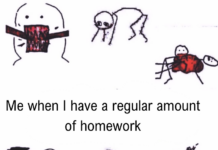Since the release of “Hamilton” last year, the musical has rightfully gained widespread recognition as an elite musical and creative accomplishment. It is. “Hamilton” is restless, engaging, emotionally provocative, and beautifully articulated. “Hamilton” deserves the attention that it has gotten, and the musical should be heard by anybody who enjoys lively cultural experiences. No cultural artifact is perfect, however, and “Hamilton” is no exception.
It was difficult for me to read any criticisms of “Hamilton,” but I felt that doing so was necessary for me to write this article. One review by historian Lyra Monteiro is painfully accurate with how the musical confronts race. Essentially, “Hamilton’s” racially diverse cast complements and matches its dynamic assortment of musical styles and choreography, but doing so does not negate the fact that the story is centered around a white historical figure who metaphorically pulled himself up by the bootstraps to become successful.
Though this is an endearing story, it omits the concerning racial divisions which created insurmountable odds for most immigrants and slaves during the Revolutionary Era. Slavery, for example, is mentioned in several lines, but is not fleshed out in the form of characters or even a song. The topic of slavery serves almost entirely to demonize Thomas Jefferson, though other Founders — such as Washington — are equally culpable slaveowners. Furthermore, just because Hamilton was an immigrant who could write himself out of predicaments does not mean that this was typical behavior for impoverished immigrants in the late 18th century.
Stories about overcoming seemingly insurmountable odds are inspiring, but too often paint a unique and inaccessible picture for most people. Lin-Manuel Miranda, the musical’s creator, told perhaps the most invigorating story for the framework which he chose, but it is the framework itself which limited the broader and more inclusive historical narrative.
Though “Hamilton” skimps on the Revolutionary Era’s racial and ethnic divisions, the musical is a tremendous example of how to create self-expression through an historical lens. As a future educator, the prospect of using Hamilton within the context of a history classroom is irresistible. The musical illuminates historical problems and universal truths appropriate for a classroom: the United States’ looming post-war debt, humanization of the Founding Fathers, the origins of the United States’ two-party system, where power resides within government and how it is perceived, losing loved ones, and how stories about people ultimately create legacies.
“Hamilton’s” music, furthermore, is as accessible as it is illustrative. Lin-Manuel Miranda’s lyrics resonate much more readily than any textbook that I have read, and the musical’s composition and orchestration are pretty much perfect. With regards to self-expression, Clint Smith, an African-American teacher and PhD candidate at Harvard, put it best: “Shout out to [Lin-Manuel Miranda] for helping open up the space for all the artsy brown kids to be their fullest, most unapologetic selves.”
Indeed, “Hamilton” has led to an increase in cultural involvement among younger people. The Gilder-Lehrman Institute, for example, sponsored a “Hamilton”-inspired student matinee in April 2016 which allowed students to develop and perform their own raps, songs, and other artistic expressions. Ham4Ham, the show’s lottery, regularly held performances until September 1, which featured aspiring artists and musicians who performed for people who entered the lottery. “Hamilton” has intrinsic and extrinsic educational value which partially makes up for its historical shortcomings.
“Hamilton” is not perfect, but it is nonetheless a dynamic and important cultural powerhouse. While the show did not take a more inclusive direction historically, it excels within its parameters to provide meaningful historical and life lessons for its audience.





